As hubs of innovation and economic powerhouses, cities have long been the backbone of global prosperity, contributing to an astonishing 80% of the world’s GDP. But with great power comes great responsibility, especially in the age of climate change. Enter the concept of sustainable cities—urban areas that have effectively married economic growth with environmental stewardship. In this light, we turn our focus to the top 10 sustainable cities in the world, the pioneers that have redefined what it means to be a smart, green, and inclusive urban space.
In a world where over half the population—4.4 billion people—are city dwellers, the need for urban areas to adapt and evolve sustainably has never been more pressing. By 2050, nearly seven out of ten people will live in cities, further spotlighting the critical role these urban centers will play in shaping the future of our planet.
These top 10 cities are leading the way through cutting-edge technology and innovation. They’ve embraced data-driven governance, enabling transparent and effective decision-making. They’re not just building structures but are designing energy-efficient architectures that minimize environmental footprint. These cities are also transforming their transportation systems, making it easier than ever for residents to reduce their own carbon footprints.

The rapid pace of urbanization does bring challenges, including urban sprawl that strains land and resources, and increases the city’s vulnerability to climate risks. However, these top 10 sustainable cities have shown that with strategic planning, investment, and a little ingenuity, cities can grow in ways that are not just economically advantageous but also environmentally responsible and socially inclusive.
This list serves as both a spotlight and a guide, offering a look at the cities that are not only shaping their own futures but are also providing a blueprint for the rest of the world to follow. It’s not just about making a city work for today; it’s about ensuring it will be a sustainable home for generations to come.
Copenhagen sets the global standard for urban sustainability, with a comprehensive approach that extends from transportation to food and energy. The city is a cyclist’s dream, offering a 230-mile bike lane network and an array of bike-sharing programs. This cycling focus has slashed a third of fossil fuel-dependent transit since 2019, eliminating 90,000 metric tons of greenhouse gases annually. Even public buses are going electric as part of the city’s ambitious aim to be carbon-neutral by 2025. Remarkably, only 29% of households even own a car.
Green architecture is also front and center, with the city pioneering mandatory green roofs for new sloped structures. These roofs are not just eye-catching; they manage stormwater, provide cooling, and capture carbon. Over 25% of Copenhagen is covered in green spaces, and more than half its energy comes from renewable sources.
But the city’s eco-commitments don’t stop there. Most of hotels in the city have an eco-certification and even offer bike rentals to guests. Each hotel employs an environmental manager to uphold top-tier sustainability practices. Additionally, a quarter of all food sales in the city come from organic sources. Yes, even your fast-food favorites like pizzas, burgers, and beers are organic here.
Two key initiatives amplify Copenhagen’s sustainability credentials: the UN17 Village and UN City. The former, a residential hub designed to meet all 17 United Nations Global Goals, will house over 1,100 residents and feature amenities like rainwater recycling and energy-efficient appliances. UN City is an ultra-efficient campus housing 11 UN agencies, featuring a large rooftop solar panel installation and a seawater-based cooling system.
Copenhagen also turns heads with Copenhill, a cutting-edge waste-to-energy plant that doubles as a recreational facility. It not only converts waste into energy but also features an artificial ski slope, one of the world’s longest, offering year-round skiing and snowboarding.
In a nutshell, Copenhagen is the epitome of a city where sustainability and quality of life go hand in hand, leading the charge for cities worldwide.

Oslo, Norway’s capital, is on a mission to be a climate-neutral city by 2030, making it a sustainability powerhouse. In a testament to its holistic commitment to green living, a staggering 47% of Oslo is dedicated to green spaces. The city is a magnet for eco-conscious developers and architects, attracting 10,000 new residents each year who are keen on green living. Oslo’s citywide mandate demands that new public buildings not only be zero-emission but also “energy-plus,” meaning they generate more energy than they consume.
To keep an eye on its carbon footprint, the city meticulously tracks emissions and directs its municipal pension fund away from fossil fuels and into green ventures. Moreover, Oslo is striving for a car-free downtown, offering incentives such as tax credits and special road access to electric vehicle owners. Additionally, the city supports electric bikes, providing credits to encourage their use.
The city’s commitment to sustainable building shines in initiatives like FutureBuilt and is redefining neighborhoods. Take the Vulkan area, for example, located between Oslo’s city center and the Grünerløkka borough. Along the scenic Akerselva river, Vulkan is a hotspot for sustainability, boasting two Energy Class A hotels, a much-loved food hall, Norway’s biggest electric car charging facility, and a variety of eateries and bars.
Heating and cooling for all buildings in Vulkan are provided by a network of nearly 1,000-foot-deep geothermal wells. Cutting-edge technologies, such as extensive solar water heaters, top-notch insulation methods, and energy recycling systems in elevators and coolers, contribute to Oslo’s growing reputation as a global leader in urban sustainability.

In the global race towards sustainability, Amsterdam is setting an example for cities worldwide. The Dutch capital was the first to adopt the doughnut economic model, a unique approach to economics that seeks to balance human needs with planetary limitations. This initiative has set the stage for Amsterdam’s future as it aims to become entirely emission-free by 2030 and transition to a fully circular economy by 2050. The city’s commitment to green practices has garnered recognition; it topped the Schroders European Sustainable Cities Index in 2021 and has even been ranked as the second-best city in the world for its green credentials.
This eco-consciousness permeates all sectors in Amsterdam. The financial sector is setting the pace for green finance. In construction, new buildings are designed to meet stringent standards of energy and resource efficiency. Even the fashion industry is getting in on the act. Amsterdam houses the world’s first museum and startup accelerator devoted to sustainable fashion, known as Fashion for Good. It’s a trendsetting move that signifies the city’s holistic approach to sustainability.
Event planners looking to make a positive impact will find Amsterdam to be a haven for sustainable practices. Many venues across the city are powered by green energy and adhere to strict waste reduction protocols. Moreover, these venues offer catering options designed to minimize food miles and other forms of environmental impact. The city’s robust public transport system, much of which runs on renewable energy, makes it easily accessible for both local and international attendees.
One cannot talk about Amsterdam’s strides in sustainability without mentioning Schoonschip Amsterdam. This is a community-driven floating village that takes the concept of sustainable living to a new level. The village is a marvel of modern eco-friendly engineering, featuring homes built with natural materials like wood and straw. It even has an interconnected grid of 500 solar panels that supply electricity to all residences. Residents utilize water-efficient showers and the community treats and reuses its wastewater, further contributing to Amsterdam’s sustainability goals.
In summary, Amsterdam isn’t just talking the talk; it’s walking the walk. Whether it’s through its pioneering economic models, eco-friendly urban planning, or the embracing of green technologies in everyday life, Amsterdam stands as a holistic model for what a sustainable future could look like for cities globally.
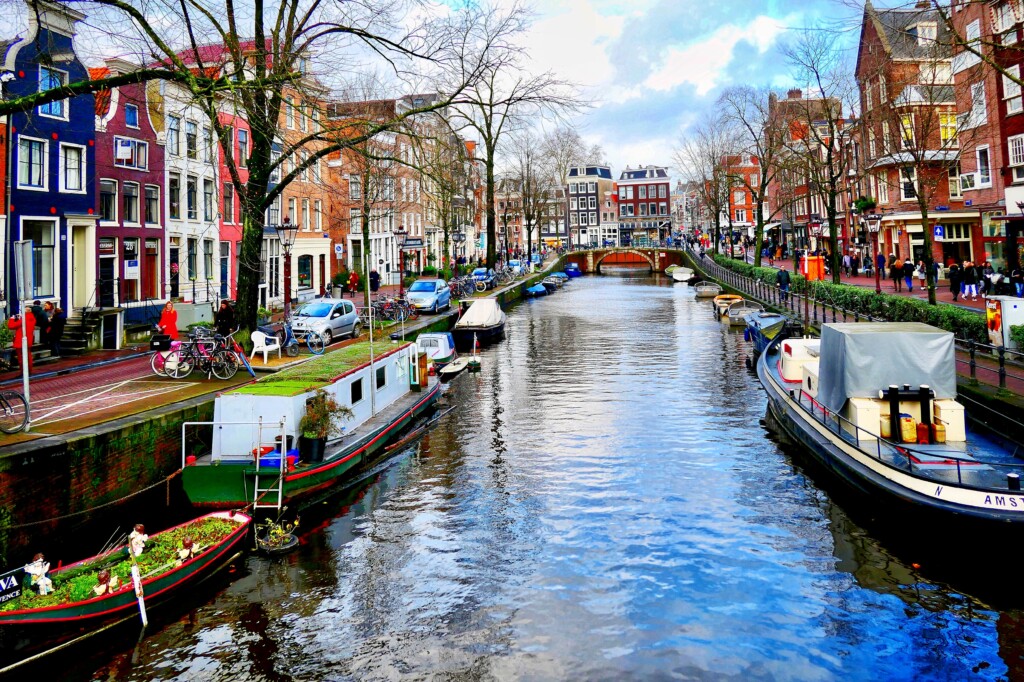
Stockholm stands as a beacon of environmental stewardship in Europe, not only setting an example for the continent but also for the world at large. The city’s new policies—The Environment Programme and The Climate Action Plan—serve as its roadmap to becoming climate positive by 2040. These aren’t fly-by-night commitments; Stockholm’s first environmental program dates back to 1976. With each policy iteration, the ambition bar has been raised, earning Stockholm the distinction of becoming Europe’s first European Green Capital in 2010.
The Environment Programme spans from 2020 to 2023, detailing goals for Stockholm that cover a range of complex challenges. These objectives extend from being a fossil-free organization by 2030 to adaptive climate change strategies, resource efficiency, and even low noise levels. It also touches on specific areas like biodiversity preservation and the eradication of toxic substances. The programme isn’t isolated; it correlates with broader goals like the UN Agenda 2030 for Sustainable Development.
Accompanying the Environment Programme is the Climate Action Plan, a companion guide that explains the nuts and bolts of how Stockholm plans to reach its lofty aims. It sets forth clear targets: fossil-free status and climate positivity by 2040, capping greenhouse gas emissions to a maximum of 1.5 tonnes of CO2e per inhabitant by 2023, and reducing climate impact due to consumption habits. Furthermore, the plan introduces a “climate budget,” setting an upper limit on atmospheric carbon dioxide emissions to 19 million tons from 2020 to 2040.
But Stockholm understands that it can’t achieve these monumental tasks solo. The plan underlines the necessity of global cooperation and technological innovation to hit the targets. It’s designed to fuel collaboration across sectors, highlighting the roles that industry, commerce, and everyday Stockholmers play in achieving these environmental milestones. Through this multi-pronged approach, Stockholm aims not only to meet its own objectives but also to contribute meaningfully to the goals set in the Paris Agreement.
In sum, Stockholm isn’t just giving lip service to sustainability; it has an actionable, comprehensive plan to ensure it’s woven into the very fabric of the city’s future.
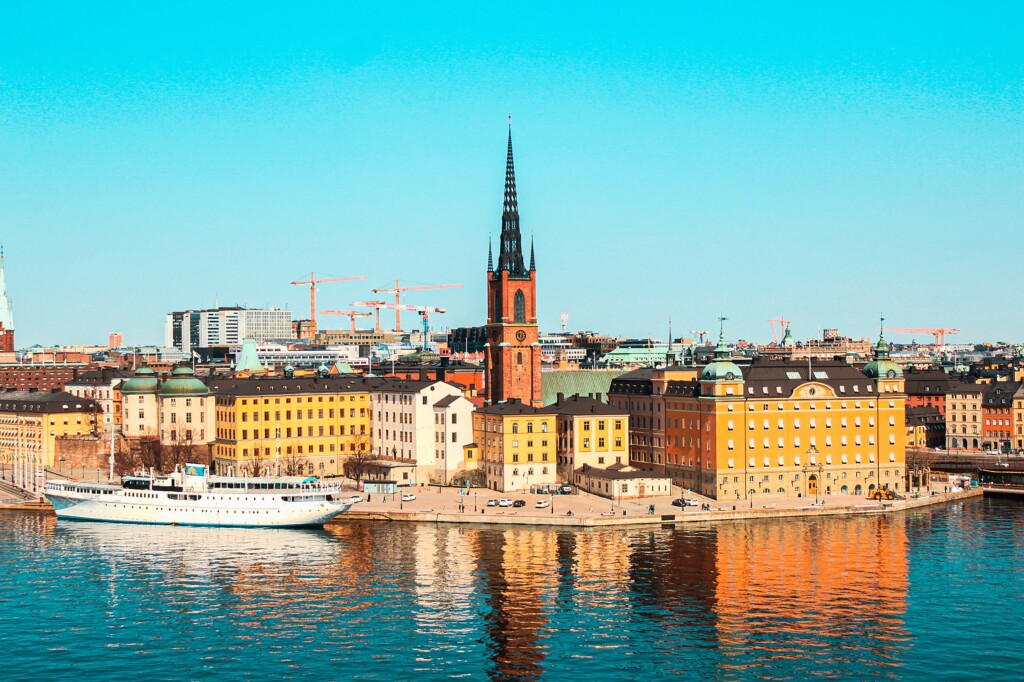
Reykjavik, the capital city of Iceland, stands as a global exemplar in sustainable urban living, almost entirely fueled by renewable energy since the 1970s. The city’s electricity grid is predominantly powered by geothermal and hydroelectric energy, constituting 27% and 73% respectively. Additionally, 95% of the buildings in the city are heated through a district-wide geothermal system. Beyond just renewable energy, Reykjavik’s commitment to a sustainable future is outlined in its Municipal Plan 2010-2030, focusing on reducing pollution, preserving green spaces, enhancing public transit, and incentivizing green construction practices.
Reykjavik set ambitious sustainability goals, aiming to be carbon-neutral by 2040 and completely free from fossil fuels by 2050. To achieve these milestones, the city is reducing the number of gas stations and making strides in pedestrian-friendly infrastructure. Notable projects like FABRIC and Living Landscape showcase the city’s commitment to environmental design. FABRIC, for example, is a building that harnesses energy from geothermal wells and is constructed mainly from eco-friendly cross-laminated timber. It also features a “Green Ribbon,” a unique space used both for geothermal energy channels and community gardening. Living Landscape, poised to become Iceland’s largest wooden structure, focuses on reviving lost natural spaces while aligning with the city’s broader green agenda.
Another highlight is Reykjavik’s focus on climate action, including reducing greenhouse gas emissions through its Municipal Plan. It also aims to ensure all vehicles, public and private, will run on green energy by 2040. Government-funded programs alongside private initiatives such as The GREEN Program and Reykjavik University’s Iceland School of Energy contribute to the city’s renewable energy research and education.
Home to 60% of Iceland’s population, Greater Reykjavik leverages its unique geographical features—geysers, hot springs, and largely dormant volcanoes—to tap into abundant geothermal resources. With programs and policies that harmonize modern urban living with nature, Reykjavik doesn’t just aim to minimize its carbon footprint but actively contributes to global sustainability discussions. The city’s initiatives could serve as a blueprint for other metropolises aspiring to achieve 100% renewable energy, setting Reykjavik as an international role model in both renewable energy utilization and sustainable urban planning.
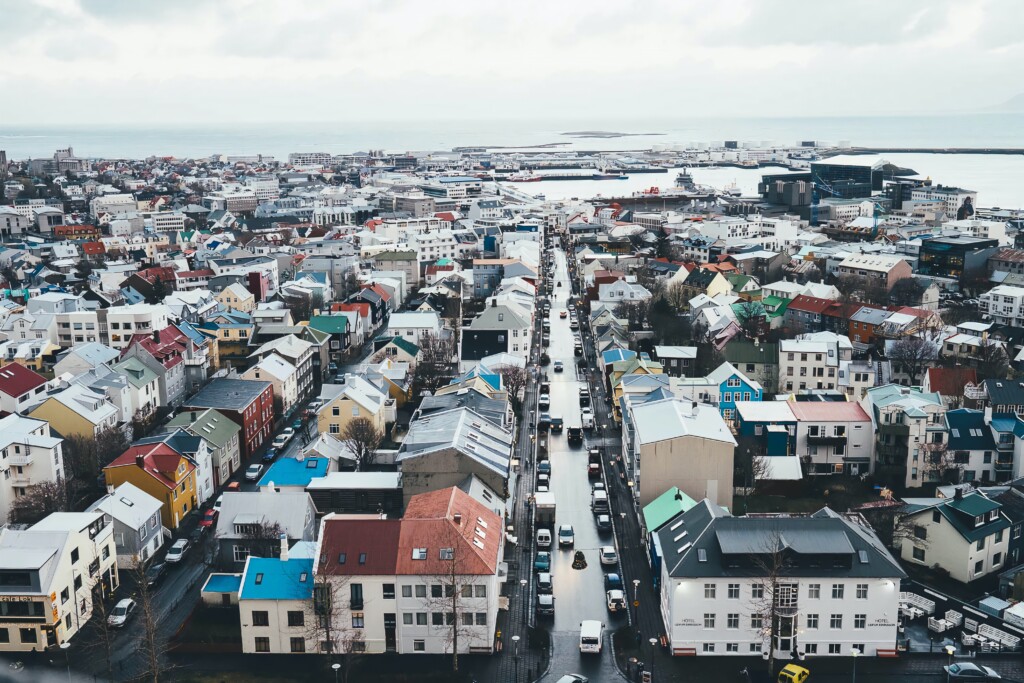
In a world increasingly plagued by pollution, Wellington, New Zealand stands as a breath of fresh air—literally. The city boasts a remarkably low pollution index of 13.66. In simpler terms, out of every 100 air particles you’d encounter in Wellington, only about 14 are polluted. This is a significant departure from global urban areas where pollution often chokes the sky and threatens public health.
So, why is Wellington’s air so clean? First off, let’s talk about its size and industrial focus. Unlike sprawling metropolises teeming with smoke-spewing factories, Wellington has a modest population of 213,000. Its main industries are not the usual pollution culprits; instead of manufacturing or heavy industry, Wellington relies on horticulture, agriculture, fishing, and tourism.
But the city’s commitment to a clean environment goes beyond its naturally low-impact industries. Wellington is a hotbed for innovation in sustainability, housing organizations like Kaibosh, Powershop, Flick, and Whare Hauora. These organizations spearhead circular economic agendas, which is a fancy way of saying they focus on waste reduction and resource reuse. They’re also beneficiaries of city grants aimed at solving social and environmental issues, making Wellington not just a great place to live, but a city actively investing in a better future.
And let’s not overlook Wellington’s smart city infrastructure, designed with circular economy principles in mind. Imagine a city where almost every component—from streetlights to benches—can be easily reused, remanufactured, or replaced. This forward-thinking design not only saves resources but also allows for continual improvements in the city’s infrastructure.
Complementing these efforts are environmental projects like Predator Free Wellington. This initiative aims to rid the city of invasive pests, thereby creating a safe haven for native birds. But how do they measure success? With TensorFlow-powered sensors that count the bird population. It’s like having a birdwatcher in every tree, but these birdwatchers are computers trained to recognize and tally our feathered friends.
So, in Wellington, it’s not just the air that’s clean. The city is creating a cleaner, more sustainable future through a holistic approach that combines smart planning, innovative funding, and cutting-edge technology. And the real winners? Both the environment and the people who get to breathe easy in this forward-thinking city.
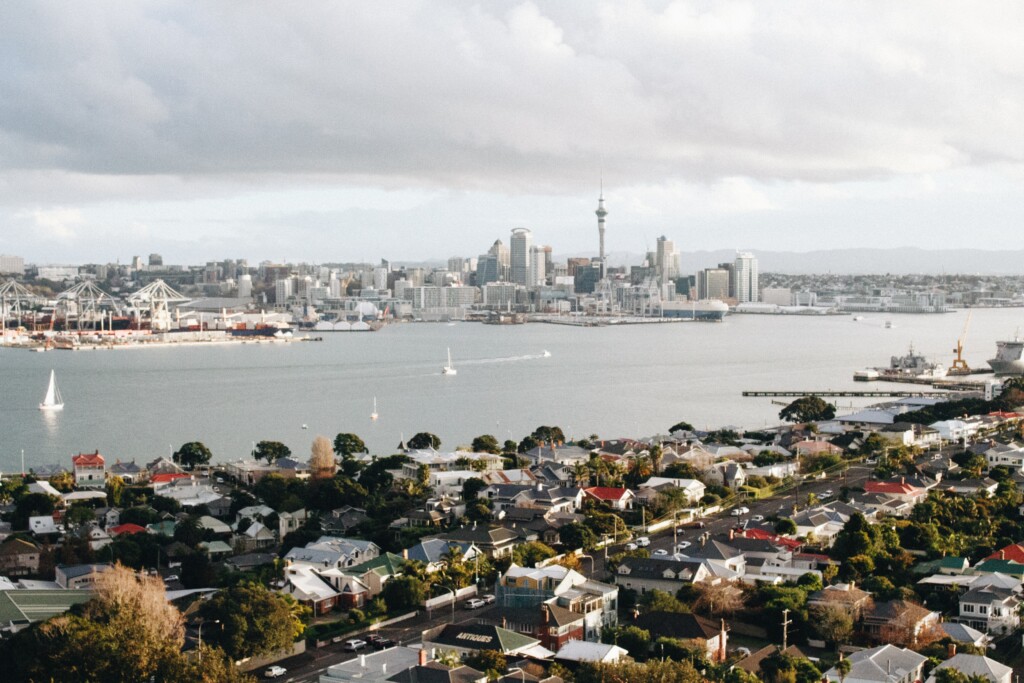
When it comes to sustainability, Canberra, Australia’s capital, is setting the global standard, earning it the title of the world’s most sustainable city. You may ask yourself, why?
First, let’s talk about energy. Canberra is a green-energy powerhouse, being the first city outside of Europe to run entirely on renewable energy sources. Imagine an entire city that’s drawing its energy like sipping from a never-ending milkshake of solar power and wind energy. Solar panels are as commonplace as barbecues, and wind turbines aren’t just scenery—they’re generating clean energy.
Canberra’s transportation sector is also a star pupil in the sustainability class. Believe it or not, 87% of the city’s transport infrastructure is green. Think buses that purr rather than growl, and electric vehicles that outnumber gas-guzzlers. Speaking of vehicles, the government is offering two years of free registration for zero-emission cars purchased between May 2021 and June 2024. It’s like getting a golden ticket, but for green transportation.
The government isn’t just talking the talk; they’re walking the green walk. Through the 2020-21 budget, a variety of initiatives were launched to help residents transition to greener living. Zero-interest loans are up for grabs for those looking to reduce their carbon footprint, covering everything from installing rooftop solar panels to buying energy-efficient appliances. So now, upgrading your home to be eco-friendly is as easy as flipping a switch—literally!
Connectivity is another highlight. With 94% of the population having internet access, Canberra is a “connected” city in more ways than one. This high level of digital access allows for real-time monitoring and data collection, optimizing everything from traffic flow to energy usage.
As for the great outdoors, Canberra is more green than concrete, with abundant parks and natural spaces. When you’re in Canberra, you’re never too far from a bit of green, whether it’s a park, a garden, or even just a tree-lined street.
Lastly, let’s talk about future goals. Canberra is ambitious, aiming for net-zero carbon emissions by 2045. So, while it’s already a green wonderland, Canberra has its eyes set on an even greener future.
To sum it up, Canberra is more than just a political hub; it’s a sustainability superstar, taking decisive steps to make green living a way of life for its residents while setting an example for the rest of the world.
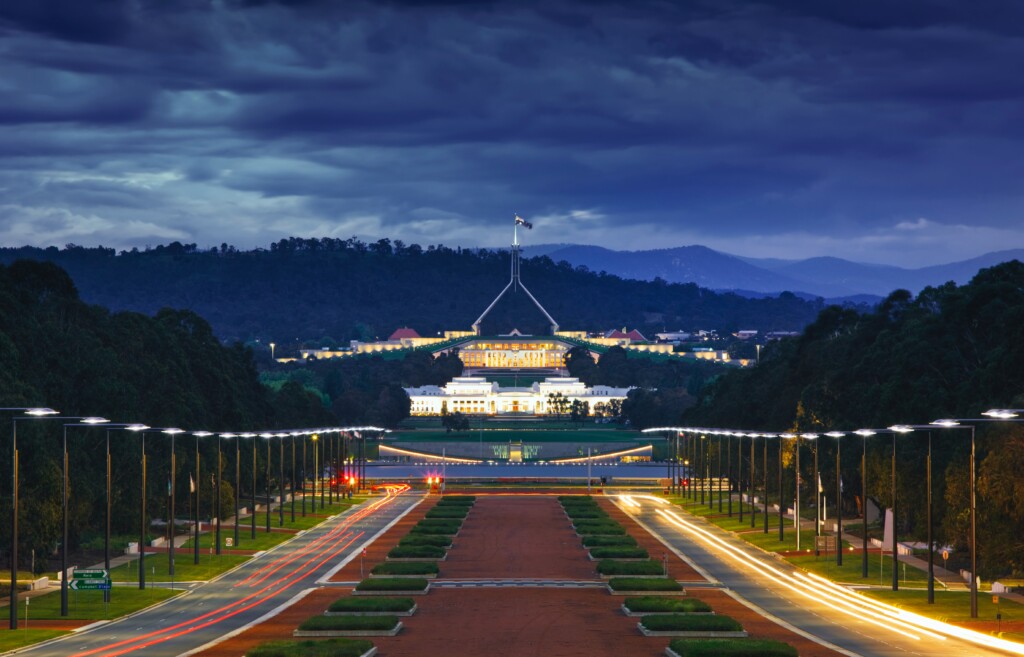
Madrid, Spain’s vibrant capital, is dynamically paving a sustainable path, establishing itself as a paradigm of green urban development and offering a blueprint that other global cities might well follow.
Rather than focusing solely on restrictive measures, Madrid is investing vigorously in alternative, eco-friendly transportation. Streets, once throbbing with vehicular traffic, are morphing into pedestrian havens and bicycle-friendly lanes. The city is amplifying its support for cycling, establishing additional docking stations to make this two-wheeled transit option even more appealing. Furthermore, In December 2022, Madrid achieved a remarkable milestone by becoming the first significant European capital to run a completely clean municipal bus fleet. The city boasts a fleet comprising 1,915 buses powered by compressed natural gas (CNG) and an additional 180 electric buses.
A pivotal element of Madrid’s sustainability approach is the “Strategic Plan of Green Areas, Trees, and Biodiversity of the City of Madrid.” Far from a theoretical endeavor, tangible manifestations of this plan are emerging. One standout initiative involves constructing a green wall enveloping the city and establishing a 75-kilometer forest, which will be home to nearly half a million new trees. This isn’t merely an aesthetic enhancement. This “forest loop” is envisioned as a living, breathing entity—a verdant lung that purifies the city’s air while also functioning as a hotspot for biodiversity.
These lush infrastructural investments do more than just spruce up the urban environment. They embody functional beauty, providing serene, rejuvenating spaces for residents while concurrently acting as natural air filtration systems. Additionally, by enhancing biodiversity, Madrid is creating sanctuaries for various plant and animal species, weaving a rich tapestry of life through the city.
In essence, Madrid is architecting a sustainable urban future that mitigates environmental impact without compromising on connectivity and accessibility. Through a combination of ecological projects and bolstering alternative transport, the city is not merely conceptualizing a sustainable future but physically constructing it, ensuring every step taken is a green stride forward.
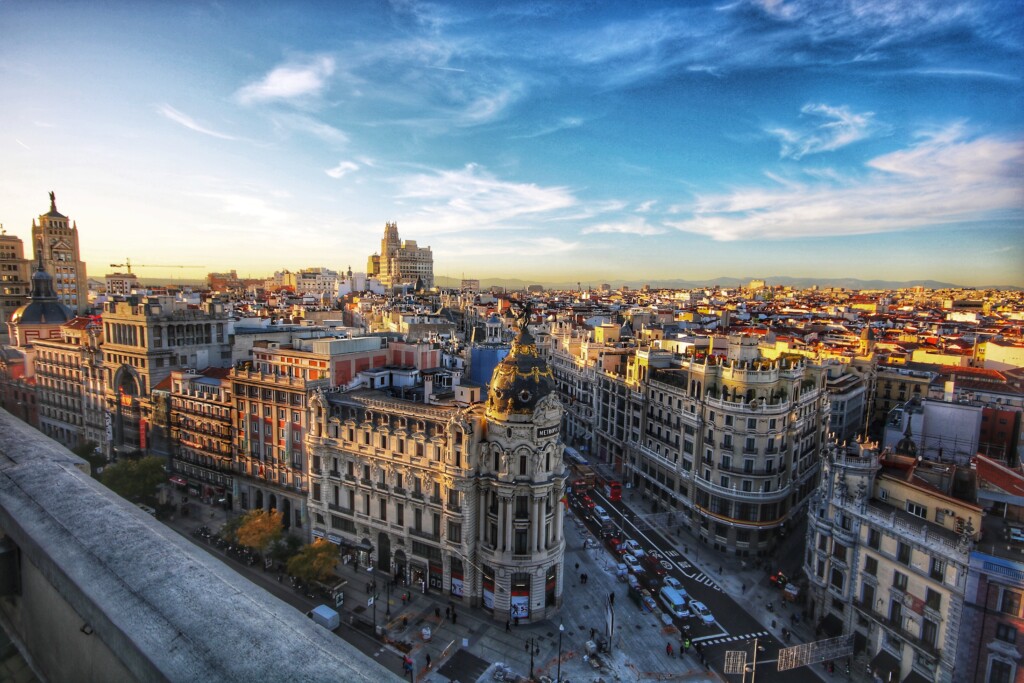
Zurich, predominantly famed as a financial hub, is steadily emerging as a beacon of sustainability and smart urban living. Going beyond its reputation as a center of banking and finance, Zurich has taken formidable strides in pivoting towards greener, smarter initiatives that focus on four main pillars: education, efficient public transport, waste-reduction goals, and renewable energy utilization.
One might dub Zurich as “the biker’s paradise,” a compliment often reserved for cities like Copenhagen. Across Zurich, bikes are not just available; they’re free. The city has embarked on an ambitious journey to lay down dedicated cycling tracks and car-free roads that already span almost 20,000 km of Swiss terrain. But it’s not just about covering ground; these paths are ingeniously synchronized with public transportation options, ensuring residents and tourists can transition from two wheels to four, or even to a train, with utmost ease.
But what about buildings and businesses? They’re not left out of Zurich’s sustainability playbook. New construction projects, whether public buildings or housing units, must adhere to stringent sustainability standards. This rigorous approach extends to the corporate sector as well. Businesses and industries are closely monitored to ensure they meet energy-efficiency standards and waste-reduction targets. In a testament to this commitment, an impressive 70% of hotels in Zurich have achieved sustainability certification.
Switching gears to energy and waste management, Zurich’s report card is equally compelling. A whopping 80% of the city’s electricity is generated from renewable sources, reducing dependency on fossil fuels. When it comes to waste, the city has set an exemplary standard. Over 40% of its waste is recycled, and the residents play a proactive role in this endeavor. Statistics reveal that 94% of old glass and 81% of polyethylene terephthalate (that’s your typical plastic container) are conscientiously deposited at special collection points, steering clear of household trash bins.
In summary, Zurich is not merely a city that deals in Swiss francs and high finance; it’s a living model of how urban spaces can integrate sustainability into their DNA. From eco-friendly transport options to robust recycling programs and stringent building codes, Zurich proves that financial acumen and sustainability can indeed go hand in hand.

Nestled amidst mountains and forests, Seattle isn’t just a picturesque city; it’s a frontrunner in sustainability. Known as the Emerald City, Seattle has taken concrete steps to merge economic growth with eco-consciousness—doubling its economy while cutting carbon emissions by half. The city is mainly powered by hydropower, accounting for over 80% of its electricity, demonstrating its commitment to clean energy. Additionally, Seattle City Light is paving the way for solar energy, assisting thousands of residents and businesses in their transition to solar power. This aligns with Washington State’s ambitious goal to be 100% carbon-free by 2045, which will also spark job creation in green sectors like wind turbines and solar farms.
Transportation is often the villain in the sustainability story, but Seattle is flipping that script. In Washington State, transportation is the largest pollutant; however, Seattle has instituted laws like the Clean Car Law and adopted a zero-emission vehicle standard to mitigate this. The city has also expanded its electric public transit options, incorporating more electric streetcars and light railways.
Seattle’s approach to sustainability is strongly community-oriented. Organizations like S2 and Interweave function as the backbone for local sustainability initiatives, providing expertise and resources to grassroots projects. They’re particularly focused on empowering minority communities, ensuring that sustainability efforts benefit everyone equitably. Moreover, 97% of Seattle residents live within a 10-minute walk of a park or publicly owned green space, emphasizing the city’s commitment to urban-nature balance.
In the business realm, Seattle offers the Green Business Program, a utility-managed resource that assists businesses in recycling and conservation. Additionally, the Washington Materials Marketplace encourages a circular economy by helping organizations recycle materials that are traditionally hard to repurpose.
Lastly, with tech giants like Microsoft and Amazon calling Seattle home, the city’s job market is booming. Both organizations are collaborating to add 100,000 U.S. employees, offering a unique opportunity to integrate sustainability into the technology sector. Organizations like S2 and Interweave monitor workplace equality, ensuring that as Seattle grows, it does so sustainably and inclusively. In essence, Seattle is shaping a future that’s not just economically robust but also socially equitable and environmentally responsible.
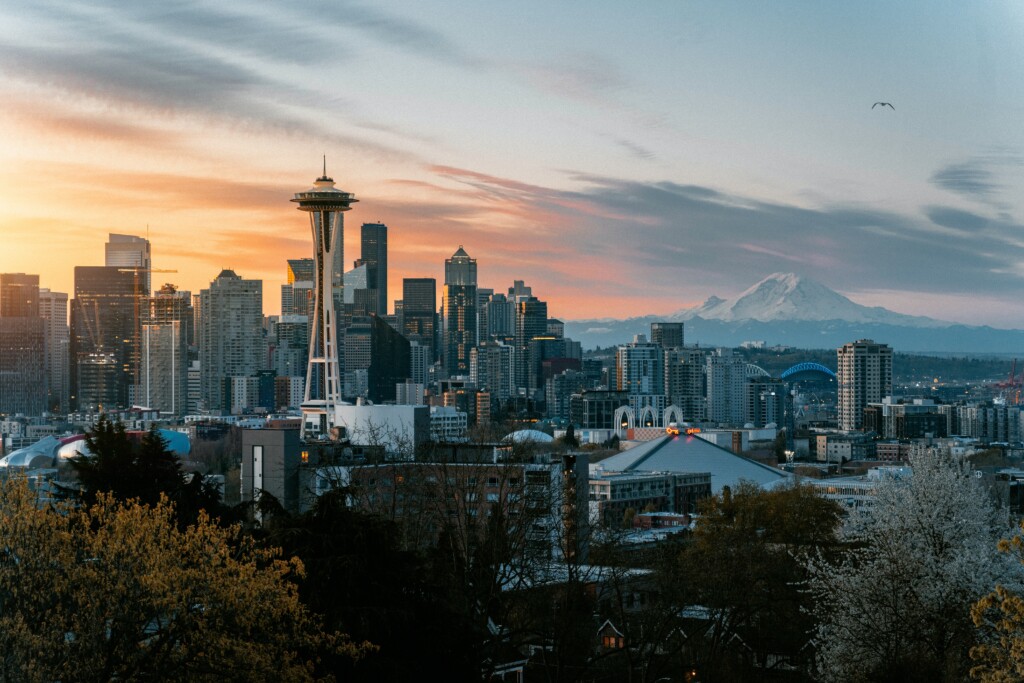
In conclusion, the cities listed above – from Copenhagen to Seattle – are at the forefront of innovative practices and policies that balance economic growth, social equity, and environmental preservation. They serve as models for other cities around the world, demonstrating that sustainability is not only possible, but also critical for the advancement of our societies and the well-being of our planet.
These cities manage to reduce waste, foster green transportation, and promote renewable energy. They also make it a priority to involve their communities in their sustainability efforts, ensuring that their actions are inclusive and equitable. Their approach is a proof that changes taken today have a colossal impact on the future.
Such real-world examples underline the importance and urgency of implementing more sustainable practices in cities globally. They remind us that sustainability is not just about the environment. It’s also about creating a future in which every person can thrive.
The work of these cities should both inspire us and challenge us. It ‘s time to ask ourselves:
if they can do it, why can’t we?
Stay a while and read more posts like this
Let’s devote a few minutes to envision our world in 2100. It’s quite a thought experiment, given the dramatic transformations our planet has experienced in...
With climate change looming large, the world is embarking on a quest for solutions to heal our ailing planet. Solar geoengineering emerges as a burgeoning field,...
Taking on parenthood comes with unique choices that factor in more than just our family’s immediate needs. For modern parents, who are not just guardians of...